You can read this exclusive content thanks to the FALATH & PARTNERS law firm, which assists American people with Slovak roots in obtaining Slovak citizenship and reconnecting them with the land of their ancestors.
Slovakia has a long wine-making tradition, dating back to 7th century BC when Celtic settlers planted grapes on the hilly land north-east of Bratislava. But it is not just the region around the Little Carpathians mountain range; viticulture stretches across southern Slovakia all the way to the famous Tokaj region in eastern parts of the country.
Nevertheless, Slovak wines are not well known abroad.
However, Slovak-American Jason Whiteside believes wine aficionados can find a unique set of flavours, varieties, and terroirs to study and discover in Slovakia's wine-making regions, and hopes to see more of these wines exported to around the world. In fact, he already has some ideas as to how to achieve just that. His ancestors emigrated to the US in the early 20th century, starting with his great-grandfather František in 1910. Coincidentally, it was later learned that František's father made wine barrels in Slovakia.
"Seeing how deep I am in the wine business now, it is a pretty unique coincidence," he tells The Slovak Spectator.

Lucky to meet his great-grandmother
There's quite a few such coincidences in Whiteside's family history.
His great-grandparents on his mother's side emigrated because they were in trouble and could not get married back home as each belonged to two feuding families. František was born in the village now known as Soľnička, Helen in the nearby village of Poľany, both in the historic Zemplín region. The great-grandfather came first on board the Carpathia docked Croatia, the very ship that would later answer the Titanic's distress call and rescue the survivors. The great-grandmother came over later.
He became a bricklayer in New Jersey, and a part-time chauffer for Robert Wood Johnson II, the son of the founder of Johnson and Johnson Pharmaceuticals, which, coincidentally, Jason Whiteside actually worked for as a salesman for several years. Eventually, František and Helen got married in Brunswick, New Jersey and then moved to Lorain, Ohio.
"I knew my great-grandmother. I’m very lucky to have met her and have memories of her. My brother didn't meet her. She didn't speak nor understood any English, she just pinched my cheeks, said some nice things and gave me candies," Whiteside recollects, adding that they did not talk about how life was like back in their homeland. He would spend summer time with them and visit the Slovak and Hungarian clubs, growing up with traditional Slovak dishes cooked by his great-grandmother.
"They were so excited to be in America and to be American. Everyone was very proud to start a new life, but they always kept the food and farming traditions."
The tradition of cooking Slovak dishes persisted a long time. Even Whiteside's mother would make paprikash, cabbage rolls, goulash, halušky, poppy seed rolls and the like. His parents too were active in the local diaspora, participating in local clubs.
"It's a little sad to see that it seems to be fading. For example, the Slovak club in Lorraine is only open one day a week now. It's a giant club with a great bar and a bowling alley in the basement. I don't know if it's a general economic depression or if it's the the loss of the culture," he muses.
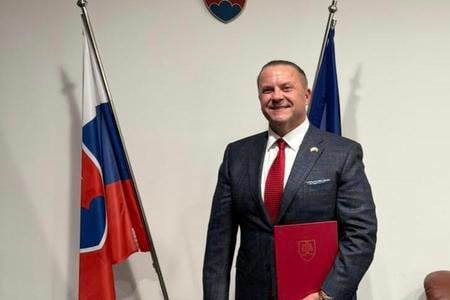
How to introduce Slovak wines to the world
Fresh out of university, Whiteside spent his first nine years of his career working in pharmaceutical sales. Eventually, he grew disillusioned, took a break, and moved to the island of Saint Martin in the Caribbean. There a chance encounter with Anthony Bourdain, the famous chef, changed his life. Whiteside took Bourdain spear-fishing as part of a catch & cook adventure. Interestingly, it was a first for Bourdain and a friendship started.
"When I told him I was enamoured with the wine on the island, he suggested I go to a wine school. So I did; I enrolled in the Wine & Spirit Education Trust, which is a British wine school. I made two vintages of wine and got production experience. I worked as a sommelier. And then I transitioned all that education and experience back into my sales training and started to sell wine to restaurants and stores," he explains, adding that he now works for a company that buys wine for very rich and famous people.
If you are wondering who that might be, let's just say there is a reason he can tell you the birth year of Beyoncé and LeBron James from the top of his head.
Whiteside believes that Slovak wine has a lot to offer both the US and the UK as both countries are looking for affordable alternatives to other wine producing regions. He would like to bring them at least some Slovak wines.
Before he visited Slovakia last September, he had been approached by Slovak Consul general Milan Vrbovský and Eva Staroňová from the +421 Foundation whether there was any opportunity to bring some wine over to the US.
"When I was in Bratislava, I was impressed with the amount of wine that I could try and the quality in comparison to the price," he says, adding that 80 to 85 percent of Slovak wine is white wine, which he likes. According to him, Slovakia makes amazing white wines that are just €12 or €14 and are on par with what you can find anywhere else in the world sold a higher price.
"There's the Slovak National Collection of Wines in Bratislava. An amazing opportunity for me to try 72 wines in 100 minutes was presented. I'm probably one of the few people who's trained to do that and be able to walk out of the place," he says, jokingly.
In his opinion, Americans would like Slovak wines. The barrier would be the language on the label, the producer and regional names. However, he opines that if Americans can learn Greek and Portuguese wines, it can be done, but it would take some education. As he continues to expound on his vision, you can see a plan has already been hatched in his mind.
"There's got to be a little bit cuisine, right? There's a lot of French, Italian restaurants in the US and the UK that drive those wines. Places with Slovak cuisines that we can at least start introducing the wines will be successful. I don't know if Slovak producers can scale up and make enough to export, but if they can, they're going to have to probably make export labels that are a little easier to pronounce. It sounds silly to say, but it's true. I can see it right now. We could plan a 'Slovak versus the world' wine tasting, with a four course menu, two wines each course served bling, you don't know what they are other than one is from Slovakia and one is from somewhere else in the world and at about the same price level. You decide which you like better. At the end of the night, all is revealed. I'll bet Slovakia wins as many as it doesn't, and that would get people excited."
In Whiteside’s opinion, it would be like the famous 1976 competition that went on to be known as the Judgement of Paris that put the US on the wine map. Back then, a British wine merchant pitted the top French wines against US wines. Most of the judges were French, and had blind tastings so that they didn't know which wine was from where. In the end, the US wines beat the French ones handily, much to the shock of the world, making Napa County wine in California famous.
But the worst thing you can do, according to Whiteside, is to get people excited and not have a way for them to buy it. So you have to have a pipeline.
"I think we're going to do it, but we cannot disappoint people," he adds.
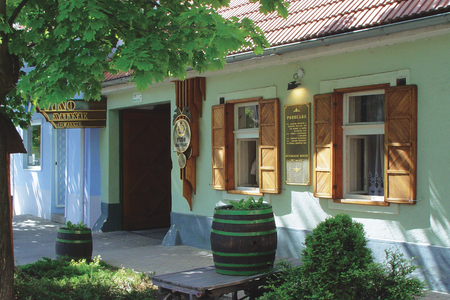
How to spot a fake wine
According to Whiteside, learning all there is to wines is no easy feat. You can actually attend a special programme right in Bratislava.
What the programme teaches is a very systematic approach to every glass of wine. You look at it, you make observations based on what the wine looks like, smells like, tastes like, then you make deductions as to what it might be based on all your senses. You even try to deduct its worth, in the sense of the question whether a particular wine is meant for everyday table with pizza and TV or for fine dining with steak and lobster, Whiteside explains.
The schooling also includes all the history, traditions, and language of every different wine-producing country. Do they age in barrels, stainless steel, clay pots? It takes years, even decades, to learn it all.
Since Whiteside deals with very expensive wine, he has also studied wine at the anti-fraud level. There are many attempts at counterfeiting collectible wine, such as filling true empty bottles with fake wine and resealing them, photocopying labels, etc.
"There's a lot of invisible ink, micro-writing, all kinds of different techniques that wine makers will employ and that are secret. The most expensive bottle of wine I've sold was for $39,000. At that level, you want to make sure it's real," he says, adding a example of a brand called Domain Romani Conti that belongs among the most expensive wines. Between the capsule and the cork is a drop of beeswax that can be genetically matched to the beehive it was taken from. That is how serious the business is about the authenticity of a given wine.
Actually, even wine itself can be counterfeited, as is evidenced by a man named Rudy Kurniawan who served seven years in the US Federal Penitentiary and then deported. He blended old and new wines, put them in fake bottles and made millions of dollars by duping Hollywood.
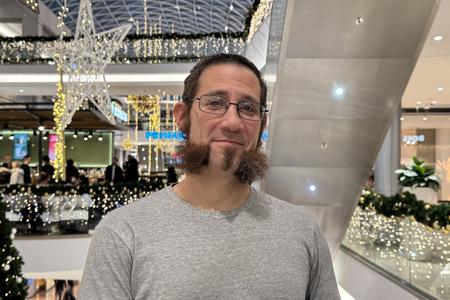
Paperwork done
Whiteside has already had his Slovak Living Abroad certificate and residency approved. His law firm told him that Slovak citizenship has been approved as well, but it will take a few months of paperwork to finish.
During his last visit to Slovakia, Whiteside did not have time to travel across the country. On his next visit to the country, he is planning to explore wine regions in various parts of Slovakia. Since he does not speak Slovak - at the moment he is learning French as it is needed for work - he reckons he will probably need to have someone with him that can help translate.
"I'm definitely coming back and visiting the wine regions and then maybe also seeing the birthplace of my great-grandparents," he concludes.
Spectacular Slovakia travel guides
A helping hand in the heart of Europe thanks to our Slovakia travel guide with more than 1,000 photos and hundred of tourist spots.
Our detailed travel guide to the Tatras introduces you to the whole region around the Tatra mountains, including attractions on the Polish side.
Lost in Bratislava? Impossible with our City Guide!
See some selected travel articles, podcasts, and traveller info as well as other guides dedicated to Nitra, Trenčín Region, Trnava Region and Žilina Region.


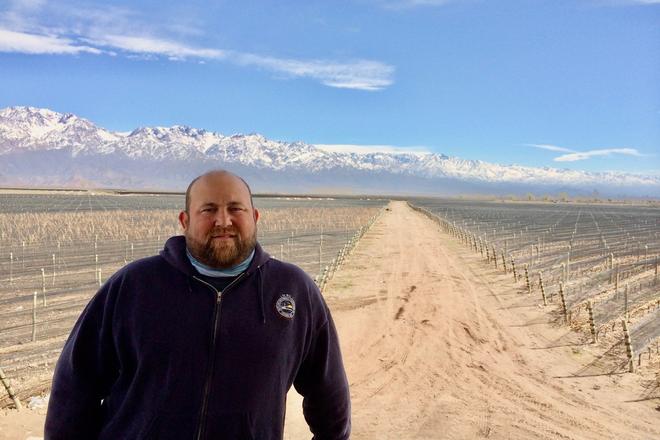 Jason Whiteside. (source: Archive of J. W.)
Jason Whiteside. (source: Archive of J. W.)
 František and Helen. (source: Archive of J. W.)
František and Helen. (source: Archive of J. W.)
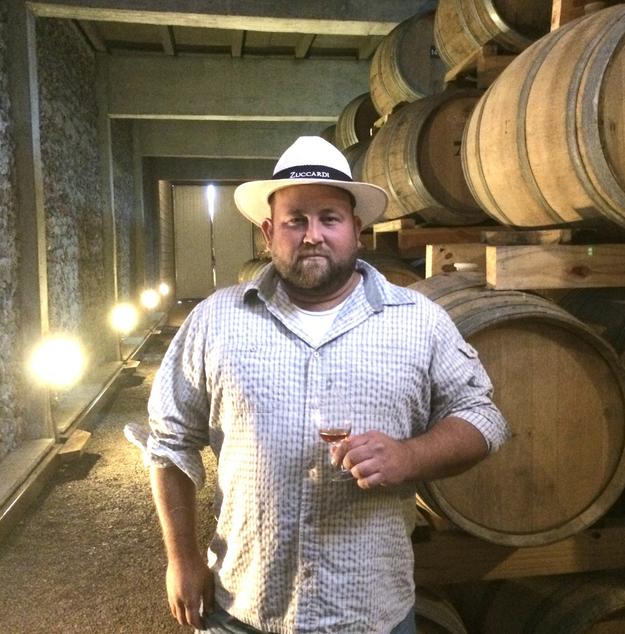 Jason Whiteside. (source: Archive of J. W.)
Jason Whiteside. (source: Archive of J. W.)
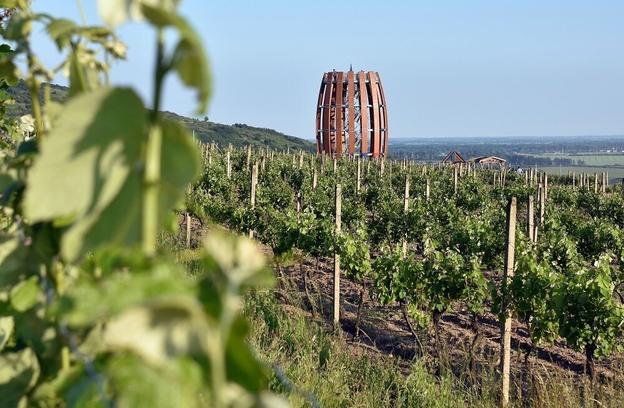 The Tokaj wine region in eastern Slovakia. (source: SITA)
The Tokaj wine region in eastern Slovakia. (source: SITA)